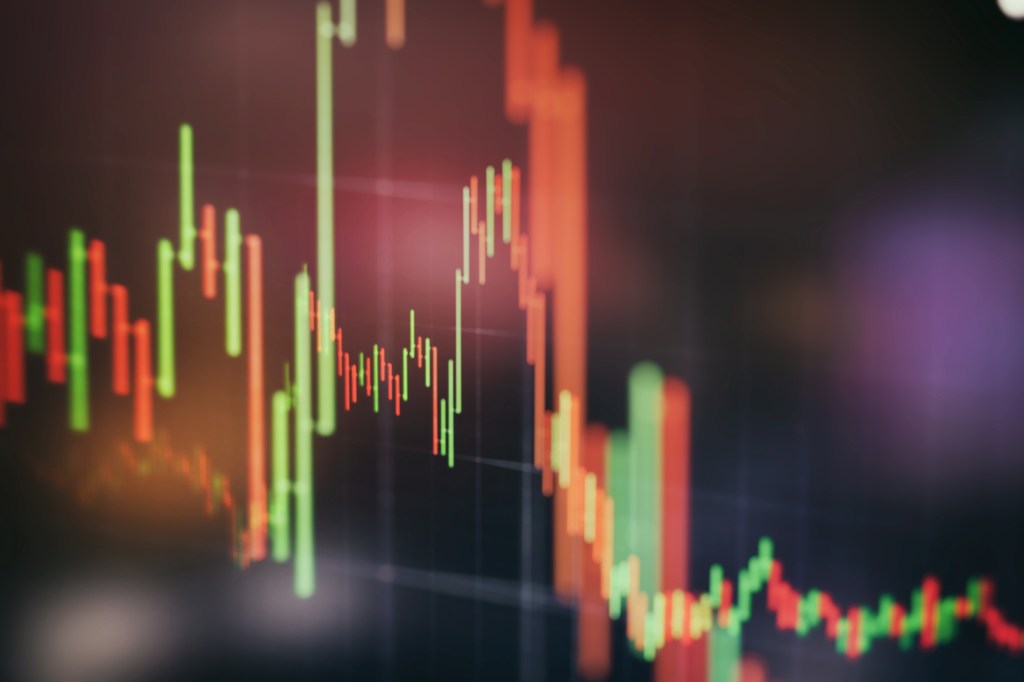A popular investing strategy focused on buying the highest-yielding stocks among a select group of blue chips each year is a proven long-term winner. This year’s dogs look ready to run.

Like metallurgists of antiquity who sought a method for turning base metals into gold, stock market investors are constantly on the hunt for a formula or a guide that reliably produces positive investment returns and gives them an edge on the overall market.
The principle of Occam’s razor suggests that solutions involving fewer variables are preferable to those that require more inputs. Simpler is better because getting the job done with just a few moving parts carries less risk of confusion and failure than a highly complex system.
If reliability and simplicity are what you seek in stock market investing, it’s hard to beat the Dogs of the Dow.
The investment strategy calls for buying equal dollar amounts of each of the 10 stocks in the Dow Jones Industrial Average with the highest dividend yields as a new year begins.
After holding these stocks for 12 months, you rebalance the portfolio into the 10 stocks with the highest dividend yields one year hence and repeat the process annually.
The idea is to catch high-quality companies while they’re temporarily down on their luck and bargain-priced and to get paid by the dividends while you wait for the eventual recovery.
“Historically, dividends have been about half of a stock’s total return, and dividends are very stable, but stock prices are volatile,” says Michael O’Higgins, the Miami-based money manager who promulgated the strategy 33 years ago in his book, Beating The Dow.
However, the “dogs” moniker was coined later in the 1990s by Andrew Bary in Barron’s.
“If companies still pay dividends, that means that they have money to pay a dividend, and they usually turn around because one thing that happens to troubled companies is new management comes in and cleans house,” says O’Higgins, 76. “Another reason they recover is simply that it’s a cyclical world and down cycles are inevitably followed by up cycles.”
The Dogs of the Dow strategy has proven its mettle but experienced some cyclicality. It underperforms the broader stock market during raging bull markets like last year and 1999 when the dot-com bubble inflated to untenable proportions.
The dogs tend to outperform during bearish times like in 2022 and during major bear markets like those in 1972-1974 and 2000-2002.
Loaded up with big banks like Citigroup, Bank of America and JPMorgan Chase that were on the verge of going belly-up before the feds came to the rescue, as well as the moribund General Electric, the Dow dogs lagged the broader market during the 2007-2009 bear market.
Still, they rode a seven-year streak of beating the Dow from 2010 until 2016 as bank dividends suspended during the financial crisis were reinstated and financial stocks experienced a renaissance.
More recently, the 10 Dow dogs have outperformed the Dow only twice in the past seven years as rock-bottom interest rates spurred a massive run in growth stocks, particularly in the technology sector with companies like Apple and Microsoft.
With bond yields far above levels of two and three years ago, however, the tailwind for tech may prove fleeting.
“There are cycles and fashions in the investment world that go back and forth, and what tends to be working tends to continue to work for a while until it gets too far,” says O’Higgins, whose firm manages US$160 million in assets. “I like to buy things that are cheap, and the stocks that I buy are having problems; they’re in trouble, but do you really want to buy them when they’re not in trouble when the price is abnormally high?”
For more than half a century, the Dogs of the Dow has presented a compelling case that using dividend yield to gauge value among blue-chip stocks is a strategy of superior breeding for long-term success.
With annual rebalancing and dividends reinvested through December 31, 2023, the Dogs of the Dow produced a cumulative total return since 1972 of 45,340% – more than double the Dow Jones Industrial Average’s 21,459% cumulative return and 20,254% for the S&P 500 over the same period.
A five-stock subset has performed even better. The “Small Dogs of the Dow” are the five lowest-priced stocks among the full pack of 10.
Since 1972, the Small Dogs produced an 81,752% cumulative total return, or 13.77% annualized through the end of 2023. That compares to 12.49% annualized for the Dogs of the Dow, 10.89% for the Dow 30 and 10.76% for the S&P 500.
“Low dollar-price stocks are more volatile, and since you’re buying stocks that are depressed in price and compressed in value, it’s like a spring; you push it down, and if you push it down further, it’s going to spring up more,” says O’Higgins. “A quarter-point move on a US$10 stock is a lot more than it is on a US$100 stock, so if you’re going to be outperforming, you’re going to outperform more with low dollar-size stocks.”
Born in Venezuela to a Cuban mother and an Irish father who met at a high school prom in Philadelphia, O’Higgins came up with the Dogs of the Dow strategy when he was in the institutional research business covering banks at New York’s Spencer Trask & Co.
He noticed the strong preference that wealthy investors and their advisors had for blue-chip stocks found in the Dow Jones Industrial Average, a venerable index constructed to represent the largest and most important companies in the U.S. economy.
“All these bank trust departments had a list of stocks that their investment committee had authorized them to buy, and this particular bank, the Richland Trust Company in Mansfield, Ohio, had 30 stocks, and they said, ‘Oh, those are the Dow stocks, and we think that you can just focus on those 30 stocks and simplify your life’,” recounts O’Higgins. “That stuck with me, and I believed you could do even better, so I started doing research and came up with a number of strategies that worked, but the best one was the five lowest dollar-price of the 10 highest dividend payers in the Dow, so I ran with it.”
“There’s a saying in the market, buy the rumour, sell the news, and this is vice versa, so it’s often a good time to buy.”
Value investors are traditionally drawn to stocks that trade at price-earnings multiples below average compared to the overall market and a stock’s history.
Still, because of the somewhat subjective nature of reported earnings and how they can distort the economic value of a company, O’Higgins prefers to key in on the dividend yield as a measure of value.
“Earnings are what the accountants say they are, so it’s subject to manipulation,” says O’Higgins. “They can take a company that’s not making any money and make it look like it is – Enron is an extreme example—but with cash dividends, nobody can tell you that a US$1.00 dividend is a US$2.00 dividend.”
Dividend cuts are rare, but they are certainly not unheard of among stocks in the Dow 30. Dow dogs have not been immune to reduced payouts.
This month, the current Dow dog Walgreens (WBA) hacked its payout by 48%, from a quarterly rate of US$0.48 to US$0.25 per share.
Despite the stigma of giving shareholders a pay cut, reducing the dividend is hardly an automatic death sentence for a stock. On the contrary, it may be a buy signal.
Intel (INTC), a Dogs of the Dow graduate and a member last year, doubled in value by the end of 2023 after slashing its dividend by two-thirds in late February.
“Generally speaking, by the time a company cuts the dividend, it’s old news,” says O’Higgins. “There’s a saying in the market, buy the rumour, sell the news, and this is vice versa, so historically, it’s very often a good time to buy.”
Dividends are at the heart of the Dogs of the Dow strategy, but stock buybacks are another way companies return cash to shareholders.
Although pleased by the dogs’ long-term track record, focusing on the broader concept of shareholder yield (dividends plus buybacks plus net debt repayment divided by market value) is a refinement of the strategy O’Higgins would consider useful.
“There’s a lot of buying back of stock going on, and there are people who believe that these buybacks are a form of dividends, just that they’re returning your capital to you differently.”
Below are the current Dogs of the Dow ranked by share price, from lowest to highest. The first five stocks on the table are the Small Dogs of the Dow.
Alongside each of the stocks are billionaire investors who report holding the stock on their most recent Form 13-F filings with the U.S. Securities and Exchange Commission.
With an average dividend yield of 4.2% as of January 11, 2024, the Dogs of the Dow produces 133% more investment income annually than the Dow Jones Industrial Average and 186% more than the S&P 500 Index.
The dogs offer you exposure to seven of the market’s 11 sectors, and with an average P/E of 14.7, they trade well below the 21.6 P/E (Price to Earnings) ratio of the S&P 500 and the 26.7 P/E of the Dow Jones Industrial Average.
Regarding the relative trade-off between bonds and stocks, O’Higgins observes a secular trend of higher inflation than the U.S. has experienced over the past 30 years, which has usually been toxic for bonds but beneficial for stocks.
“We’re obviously in an inflationary cycle, which is bad for bonds and good for stocks and precious metals,” says O’Higgins. “Companies can adjust to whatever the conditions are, as long as there’s a free market, but bonds cannot adjust.”
This article represents the views only of the subject and should not be regarded as the provision of advice of any nature from Forbes Australia. This article is intended to provide general information only and does not take into account your individual objectives, financial situation or needs. Past performance is not necessarily indicative of future performance. You should seek independent financial and tax advice before making any decision based on this information, the views or information expressed in this article.
Forbes Australia Issue 9 is out now. Tap here to secure your copy.



